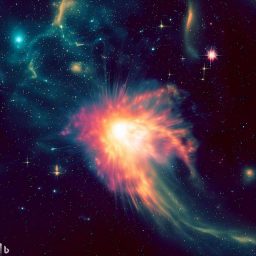Coffee talks
Monday 03/07/2023 @ 14:30, Sala riunioni quarto piano e on-line (meet.google.com/sue-bwvk-axf)
Sina Chen (Technion, Haifa, Israel), "Exploring the radio emission in radio-quiet AGN via Spectrum and Variability"
The origin of the radio emission in radio-quiet quasars (RQQ) is not established yet. Radio spectrum and radio variability are two important ways to study this topic. In the first part, I will present a VLBA study of a sample of low redshift (z < 0.5) RQQ. Most objects have an unresolved flat-spectrum core, which coincides with the optical Gaia position. The extended emission is generally steep-spectrum, has a low brightness temperature (T_B < 10^7 K), and is displaced from the optical Gaia position by ~ 5-100 pc. The flatness of the core emission implies a compact source size (< 0.1 pc), which likely originates from the accretion disk corona. The mas-scale extended emission is optically thin and of clumpy structure, and is likely produced by an outflow from the center. In the second part, I will present a quasi-simultaneous radio and X-ray monitoring of Mrk 110, carried out with the VLA at 8.5 GHz and with the RXTE at 2-10 keV. A cross-correlation analysis suggests an apparently strong (Pearson r = -0.89) and highly significant (p = 1 x 10^(-6)) correlation. However, a further analysis for physically unrelated delays, reveals that this correlation is not significant. This occurs since the Pearson correlation assumes white noise, while both the X-ray and the radio light curves follow red noise, which dramatically increases the chance to get high r values in uncorrelated data sets.

